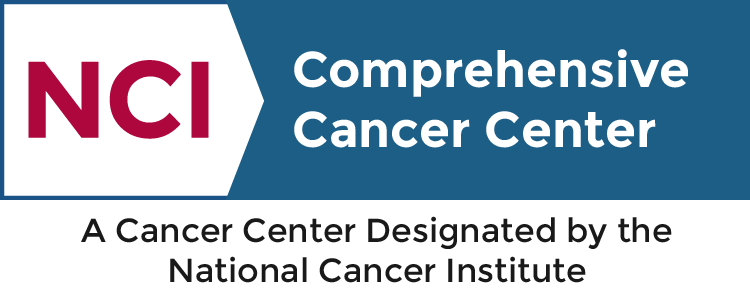Across America, melanoma remains one of the most dangerous forms of skin cancer among men and women. In 2023 alone, it is projected that nearly 100,000 Americans will develop melanoma of the skin, with the highest mortality rates found in older men, individuals of lower socioeconomic communities, and people of color. Nationwide, melanoma deaths have actually declined by nearly 20% since 2014, but these trends are not evident in communities of color and are highlighted by social determinants of health, including income, healthcare access, rural geography, race, and ethnicity. Although treatment modalities for this disease have come a long way within the past decade, the best way to tackle this disease is at the source: prevention and early detection, the primary focus of the Wipe Out Melanoma- California (WOM-CA) statewide initiative.
“The bottom line is that we are seeing the most lethal types of melanoma continue to rise in individuals who live in rural locations across California, particularly among lower socioeconomic groups, and in Black and Hispanic people,” said SCI member Susan Swetter, MD, professor of dermatology and director of WOM-CA.
The program’s main objective is to provide susceptible communities with the proper resources and education to catch the disease in its early stages when it is much more treatable. To do so, Swetter and her colleagues in Stanford Dermatology and the Stanford Office of Community Engagement and the Stanford Cancer Institute Office of Cancer Health Equity have approached this problem in a multifaceted approach. They have developed the Melanoma Community Registry of California and formed academic/health system partnerships across the state to facilitate community engagement and outreach to prevent and detect melanoma in high-risk individuals and communities.
“We aim for a program that encompasses a collaborative network of academic medical centers, other health system partners, and community stakeholders to reduce health disparities and improve access to melanoma detection and care,” Swetter said.
In California alone, there will be nearly 11,000 cases of invasive skin melanoma documented in 2023, with nearly 700 of those cases proving fatal. For context, the entire country of Australia estimates about 16,000 melanoma cases this year, making California a melanoma hotspot in the US. To address this, the WOM-CA campaign is developing a network among medical and community health centers, specifically targeting rural, low socioeconomic, and/or Hispanic communities, to raise awareness of melanoma risk and promote early detection and prompt treatment.
A major hurdle in preventing and detecting the disease in these communities is the lack of awareness. Many individuals lack knowledge of the disease and its lethality. This is particularly true in Black and Hispanic communities, and the WOM-CA team is working to understand the best means of education and outreach to people of color. From a sun protection standpoint (also called primary prevention), WOM-CA and Stanford Dermatology partners have been making in-roads in the state’s education system by targeting elementary, middle, and high school students to reduce adverse sun exposure behaviors and promote sun safety. The team has also been utilizing technology to aid in early detection, using apps that incorporate artificial intelligence (AI) to help identify concerning skin spots and studying the use of virtual and augmented reality devices that could promote sun protection practices in adolescents.
While melanoma incidence is relatively low in Black and Hispanic communities, people of color tend to be detected with later-stage disease and do worse as a result. Melanoma affects people of all skin tones and in individuals with darker skin. It tends to occur on the palms, soles, and finger/toenails, making awareness of clinical warning signs a key goal.
“Involving laypersons who ‘see the skin,’ including hairdressers and nail salon technicians is another goal to improve early detection,” per Swetter.
While melanoma incidence is relatively low in Black and Hispanic communities, people of color tend to be detected with later-stage disease and do worse as a result. Melanoma affects people of all skin tones and in individuals with darker skin. It tends to occur on the palms, soles, and finger/toenails, making awareness of clinical warning signs a key goal.
“Involving laypersons who ‘see the skin,’ including hairdressers and nail salon technicians is another goal to improve early detection,” per Swetter.
A major component for addressing these disparities is to change the rhetoric and messaging around the disease. For researchers to make groundbreaking discoveries, they need to understand the barriers and facilitators of early cancer detection and treatment and engage people in research that can involve focus groups, surveys, and other studies, which is why WOM-CA works with Stanford Community Engagement and the Stanford Cancer Institute Office of Cancer Health Equity to enhance community-based outreach and research.
“In a current study, we have created bilingual educational materials that will allow us to target Hispanic individuals to demystify some of the rhetoric around melanoma,” Swetter stated. “We’re piloting these interventions using health center clinics with Stanford and Cedars Sinai affiliations in Salinas and Los Angeles County and also exploring how teledermatology can help to expedite triage of concerning skin lesions.”
Similarly, Swetter and team are focused on Black and Asian communities as well, participating in similar qualitative research within Black populations to improve melanoma awareness and detection. In terms of next steps, the program plans to pilot the bilingual intervention through two community health organization centers in Northern and Southern California.
“Can we create something that is doable, with materials that we share across the state, and eventually, across the country, to improve patient access to healthcare settings? That’s the question we’re hoping to answer,” Swetter said.
“When it comes down to it, WOM-CA is a public health effort focused on both primary prevention across all ages and early detection to reach those populations that are more likely to succumb to the disease. It’s an audacious goal, but I’m very excited to be a part of this effort with equally invested partners at Stanford and across California.”



